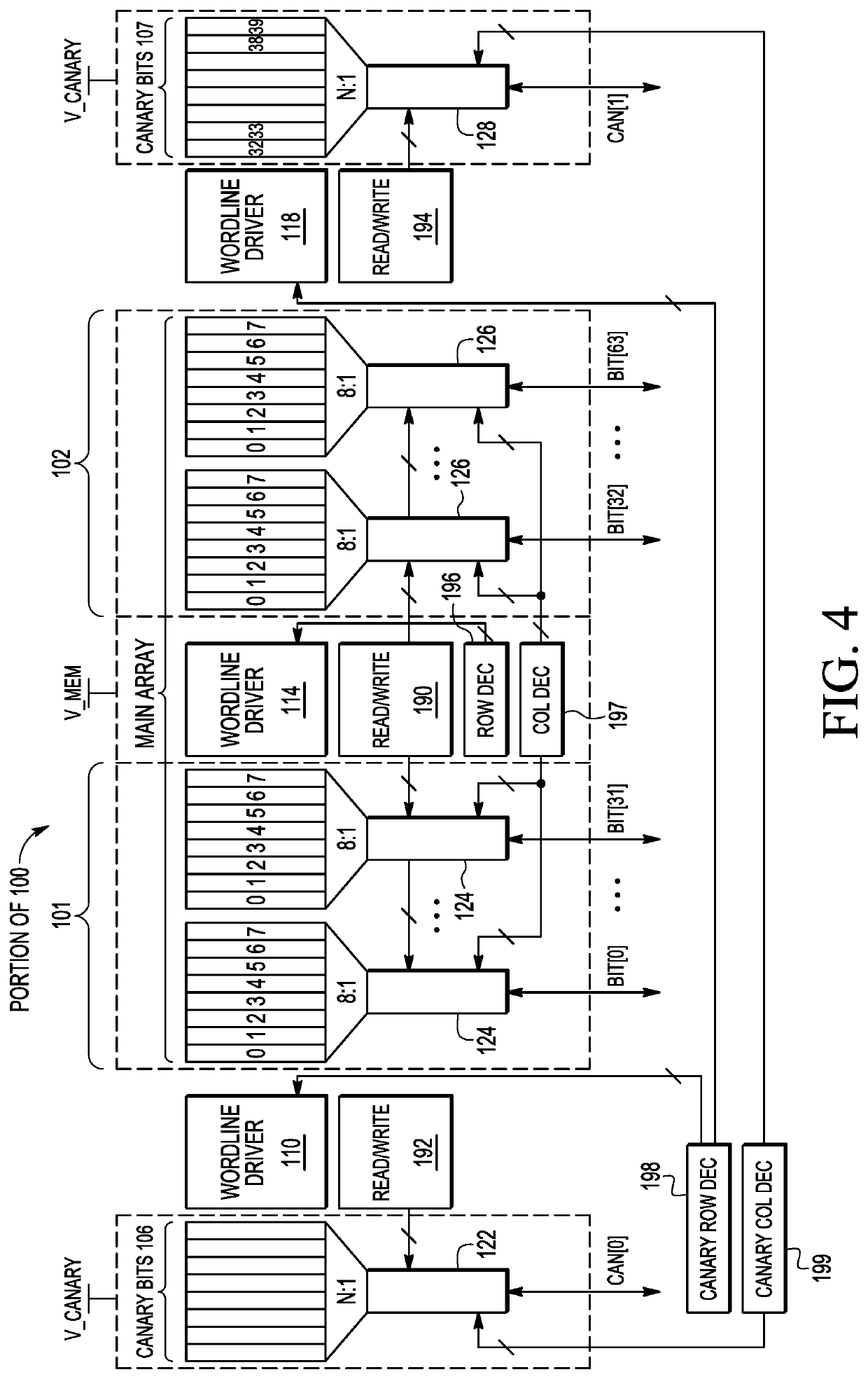Magnetic attack detection in a magnetic random access memory (MRAM)
- Summary
- Abstract
- Description
- Claims
- Application Information
AI Technical Summary
Benefits of technology
Problems solved by technology
Method used
Image
Examples
Embodiment Construction
[0010]Dimensions of an MTJ typically determine the energy required to switch the state of the cell. For example, MTJs with smaller dimensions are weaker and requires less energy to switch states. Therefore, in one embodiment, in an MRAM array, intentionally weaker cells, referred to as canary cells, having a smaller MTJ diameter than regular MRAM cells of the main array are used to warn about an oncoming magnetic field that may corrupt the main array. The diameter of the MTJ in these canary cells is chosen such that these cells switch states first, prior to cells of the main array, upon being exposed to external magnetic fields such that upon detection of a canary cell switching states, a warning is provided. The main MRAM array is interspersed with these canary cells to provide spatial resolution in case of a highly localized magnetic field disturb.
[0011]FIG. 1 illustrates, in cross-section form, an MRAM cell 10 in accordance with one embodiment of the present invention. Cell 10 in...
PUM
 Login to View More
Login to View More Abstract
Description
Claims
Application Information
 Login to View More
Login to View More - R&D
- Intellectual Property
- Life Sciences
- Materials
- Tech Scout
- Unparalleled Data Quality
- Higher Quality Content
- 60% Fewer Hallucinations
Browse by: Latest US Patents, China's latest patents, Technical Efficacy Thesaurus, Application Domain, Technology Topic, Popular Technical Reports.
© 2025 PatSnap. All rights reserved.Legal|Privacy policy|Modern Slavery Act Transparency Statement|Sitemap|About US| Contact US: help@patsnap.com



